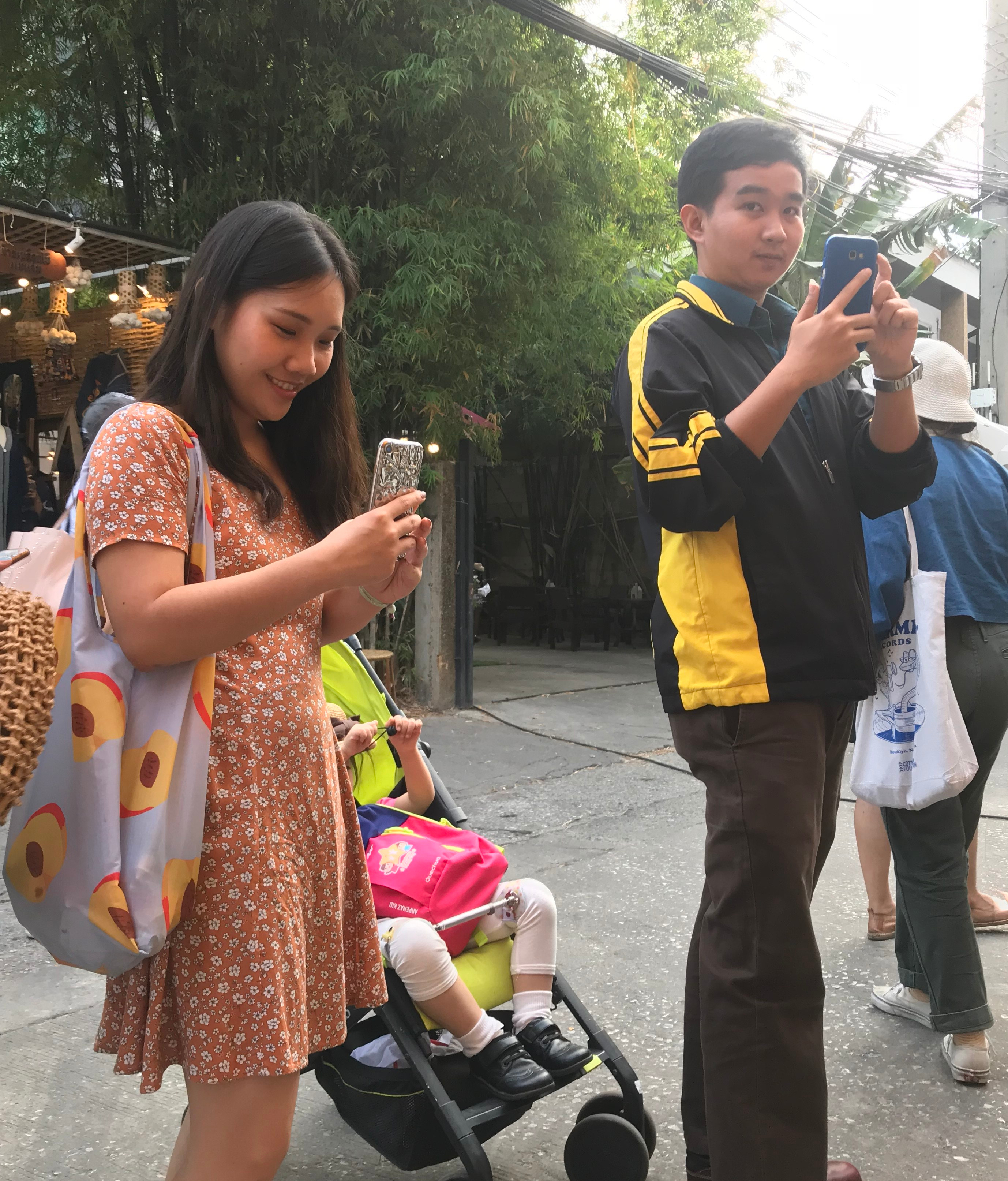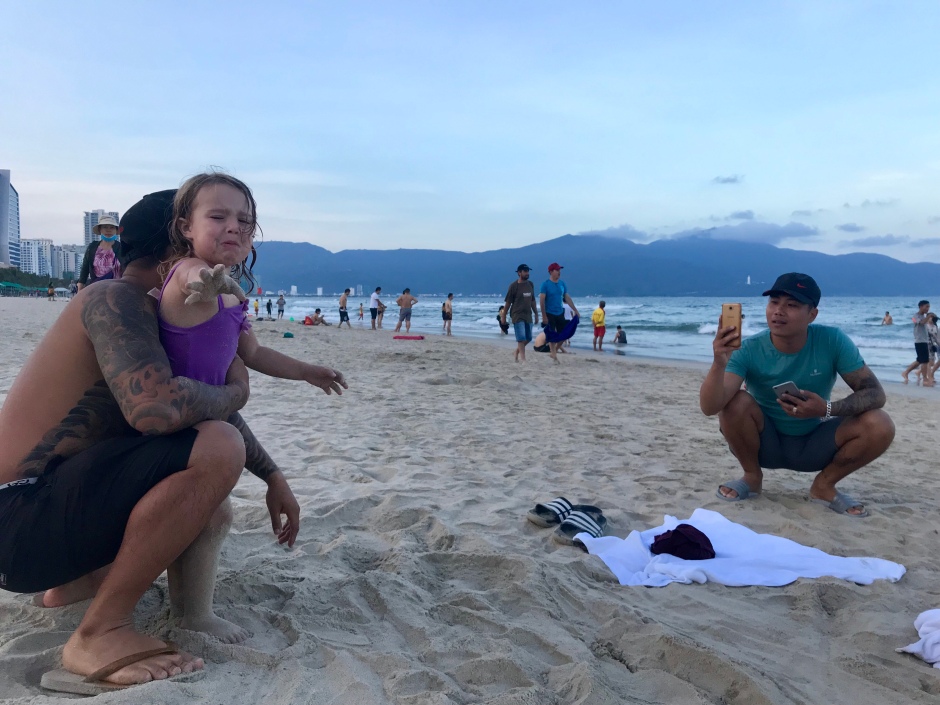We come from a homogenous part of Southern Oregon. Our town consists of a whopping 20,000 residents, mostly affluent and retired. In fact in 2011, the Census Bureau confirmed what is plainly seen, that our town is also 91% white. I love our small-town life, but as our children grow older, I worry about their cultural naiveté (to put it politely). For us, a big part of the appeal of traveling is to teach our children and to remind ourselves that the world is a big place. People are a variety of colors, their experiences are diverse, their beliefs, their standards of living, their behaviors, and their languages are all different. In planning for this trip, we had hoped that we would come back with greater respect and acceptance of others, to have more compassion and to learn more about what is socially acceptable in other countries and why.
It’s has been fascinating to watch my family navigate the grey area between cultures. We are not tourists but we are definitely not locals either. We decide when to speak English and when to speak Thai, when to wai (bow with palms pressed together to show respect) like the locals do and when to shake hands like Westerners, when to haggle over the price of a taxi and when to just let it go and pay the foreigner price, when to dress conservatively and when to just wear what is comfortable in the heat. Ben leans more towards integration. He weaves his scooter through the traffic, he takes the time to learn the Thai numbers although they are rarely used and he eats things like fried chicken neck for dinner. I definitely fall into the Western category. I am content using a few Thai phrases, I wear shorts and tank tops most days, and will go out of my way for cheese.
While I am mostly comfortable in navigating this farang (Thai word for foreigner) limbo, the one place that I struggle is when people engage my children-which they do constantly. People genuinely seem to love children in Thailand but I had no idea of the insane level of attention that our light-haired kids would attract. I personally think that my offspring are model-material, but to be fair (pun intended), they are probably just average white kids. In the beginning, it was nice to receive such a warm welcome. We encouraged our kids to say hello when people stopped to look at them. We didn’t want to be rude so we let strangers take pictures. We passively watched as good-intentioned folks lightly pinched the kids’ cheeks, touched their arms and rubbed their hair. At first, we all went along with it, but things changed over the course of a couple of weeks. Once, we were standing outside of a mall playing in a fountain when a horde of Chinese tourists came up. Worked up into a frenzy, they engulfed Falcon like busy bees surrounding a blooming flower until we intervened. Similarly, I walked Blue down the aisle of an airplane to the bathroom on a flight to Vietnam and zombie arms shot out of the seats to touch her over and over as she passed. Although not as gratuitous, the ogling is a daily occurrence. About half of the time, people ask if it is ok with us if they take pictures of the kids. The other half hover around snapping away, sometimes blocking Falcon’s escape or trying to get Blue’s attention by touching her. I want to raise polite and socially confident children, but the constant, unwanted attention is starting to yield the opposite reaction to what we had hoped.

- Taking pictures of Falcon and Blue while they play
We appreciate that blonde hair and white skin is considered lucky and beautiful in many Asian cultures. We should accept that this is part of the culture that we chose to live in. But, we also have a duty to protect our children. We say no when people ask to take pictures of the kids, but they often just move to a different location and take pictures anyway. We position our bodies to shield them from people showing too much interest. Instead of becoming more tolerant and accepting of other people, my kids are becoming increasingly shy and scared because they don’t understand the significance of their features. They just know that they don’t want to do anything to create additional attention. They don’t want to be independent, they don’t want to speak Thai, and they don’t go out of their way to make friends. The irony is not lost on me. We left our racially uniform town to experience multiculturalism, only to find that our children are now in the fishbowl.🤦♀️
So, I think the take away message here is this: As a parent, it is my duty to make my children feel safe first and foremost. My job is to demonstrate kindness to others and hope that even if my kids don’t engage, they are still witnessing the behavior I hope they will one day enact. But furthermore, I have the opportunity to teach my kids and other adults about respect. Respecting physical boundaries should be universal and someone’s personal luck or curiosity or trophy photo doesn’t trump another person’s feelings or safety.
Have other families experienced this? How do you handle the attention? I would love to hear your comments and feedback.
**I am aware that the title picture with Blue on the beach may be disturbing to see. She was in no way being harmed and had been fine with photographs until this very moment. Ben was standing just out of camera shot and stepped in immediately when she started crying.



